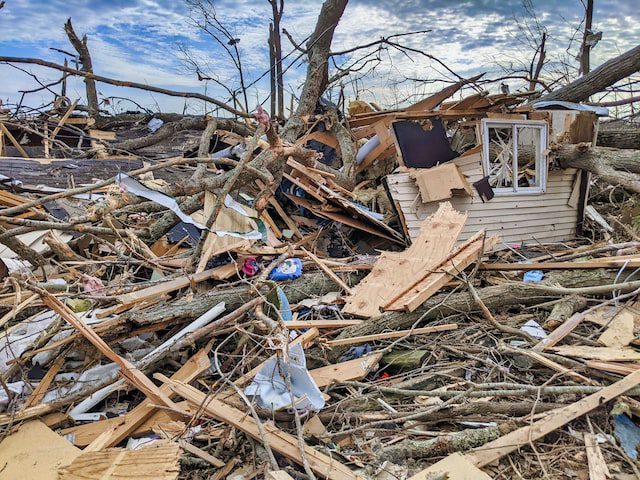Natural disasters are fairly common during the summer months and even year-round across the country. In Champaign County, no one ever imagines they will be affected by a natural disaster, but it does happen. A lack of insurance coverage could leave you unable to repair or rebuild your home if you are not prepared.
You can be covered against extreme natural disasters by your Champaign-Urbana homeowners’ insurance in some cases, but not always. It is important to know what your coverage excludes.
What Doesn’t Homeowners’ Insurance Cover?
Flooding and earth movements are usually excluded from homeowners’ insurance policies, though each policy and company varies. You might also have limited coverage for hail damage depending on where your home is located.
It is very common for homeowners insurance to exclude flood damage and mudflows. To obtain flood insurance, you must go through the National Flood Insurance Program (NFIP). The program studies flood damage in the U.S. and then works with private insurers to offer federally sponsored flood insurance. Flood insurance usually has a 30-day waiting period, so you should consider purchasing a policy before flood season.
Earthquakes and sinkholes are also typically not covered by homeowners policies. These exclusions may be referred to as earth movement damage. Landslides and mudslides are also included in this category.
Your home insurance policy probably protects you against hail damage. You might be unable to file a claim unless the hail causes structural damage.
What About Tornadoes?
Spring and summer are a time when we tend to see a fair amount of tornadoes in Illinois, but luckily, most standard homeowners insurance policies do cover damage from these storms. For the purposes of insurance, wind damage stemming from tornadoes isn’t distinct from the damage that comes from smaller gusts. If you live somewhere that’s especially vulnerable to tornadoes, like here in Illinois, insurance might get a bit trickier. The average number of tornadoes in Illinois is 54 per year, but there were none in 1919 and 1933, and as many as 124 tornadoes in 2006. So they can be a risk here.
For example, insurance companies can charge separate deductibles for claims related to wind instead of the all-perils deductible. Wind deductibles may be a flat amount, but more commonly, it’s a percentage of your total property coverage.
Consider whether you have enough coverage to rebuild if you suffer a complete loss if you live somewhere prone to tornadoes and strong storms. Your homeowners’ insurance may only cover the depreciated value of your home and property, rather than the full value.
You might consider upgrading to replacement cost coverage if your homeowners insurance only covers depreciated value or actual cash value. It is a reimbursement structure that does not account for depreciation, so you may be able to rebuild your home as it was before.
If you are affected by a natural disaster, your insurance company will compensate you according to your policy. There are three types of dwelling insurance. Among them are actual cash value, replacement cost value, and extended or guaranteed value.
Finally, if you want to ensure that you receive full compensation for your home, you should purchase extended replacement value. The purpose of this coverage is to ensure you’re compensated even if the cost of rebuilding your home exceeds your policy limit.
Check back on our blog every week for more great reasons to call Champaign / Urbana home. Make sure to check out our property search feature to find the perfect home in Champaign / Urbana. And be sure to follow us on Facebook!

